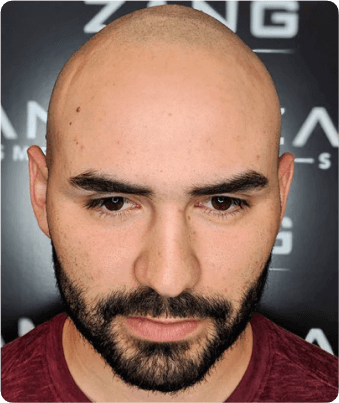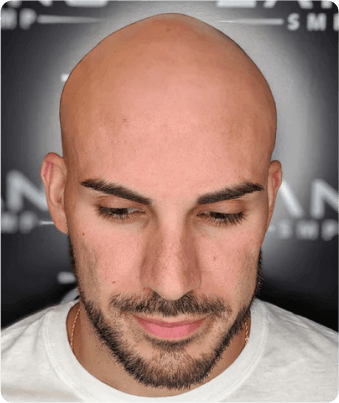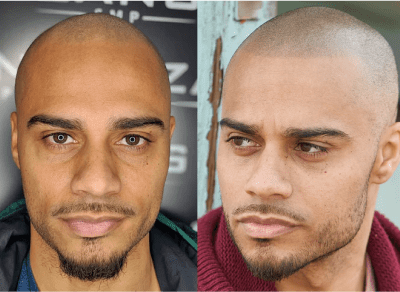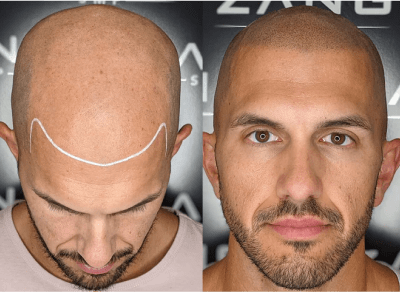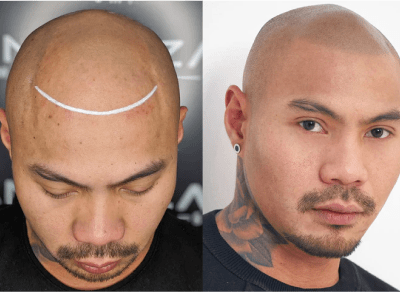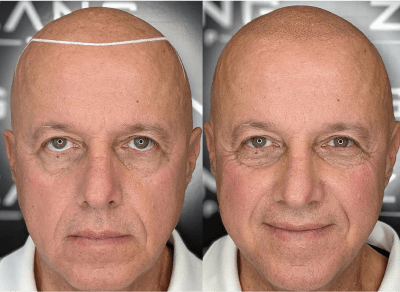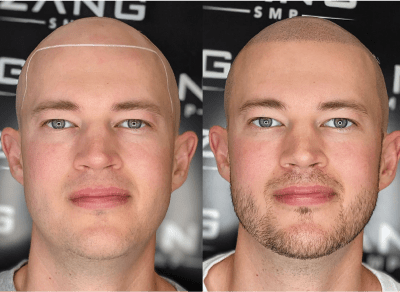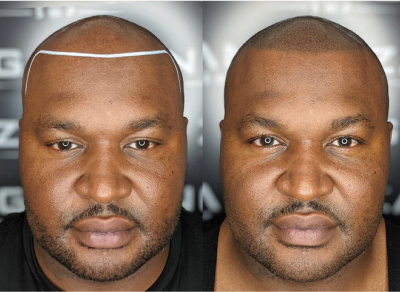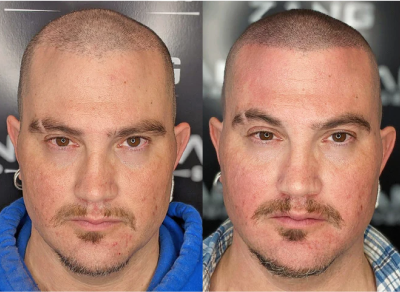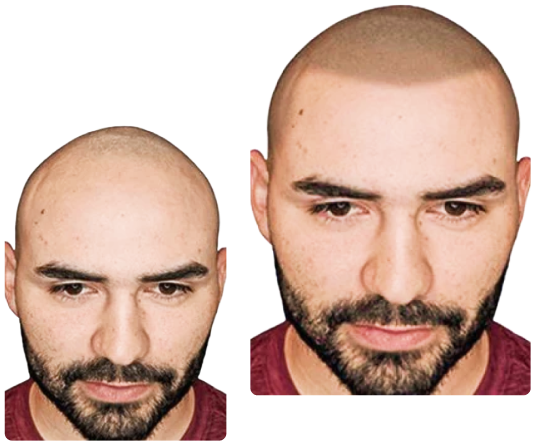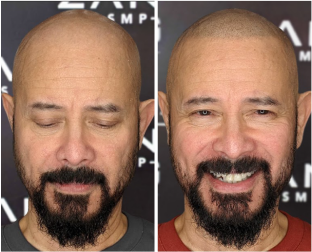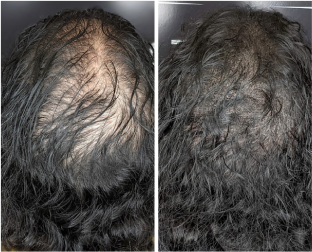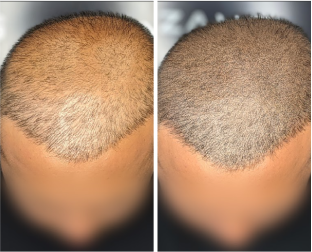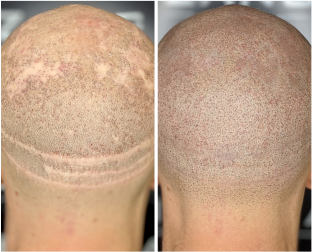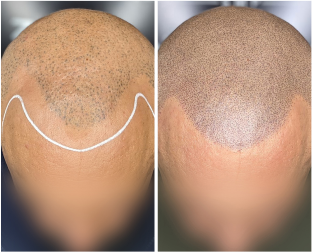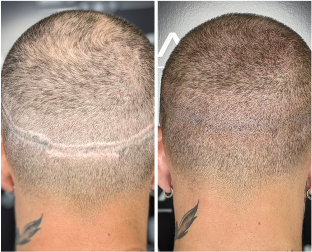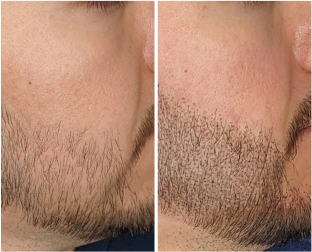How is Male Pattern Baldness Diagnosed and How Does it Influence Hair Loss?
Diagnosis of male pattern baldness involves observing the characteristic pattern of hair loss, especially around the hairline and crown. This type of hair loss is largely driven by genetic predisposition and hormonal influences.
Stages of Male Pattern Baldness
The Hamilton-Norwood scale is a diagnostic tool used by hair loss specialists to determine the level of hair loss, ranging from Stage 1, which signifies the least amount of loss, to Stage 7, which denotes total baldness on the crown. Individuals with Norwood stages 1 through 3 generally have a hairline that shows mild to moderate recession.
Those at Norwood stages 4 to 5 face severe hair loss in the front zone and notable thinning at the crown. Norwood stages 6 to 7 indicate that the hair loss has advanced to near-total or complete baldness on the whole top of the scalp.
In addition to the typical patterns of male pattern baldness, there are less frequent variations, such as diffuse thinning that affects the whole scalp but does not involve hairline recession, or isolated hair loss in the crown while the hairline remains unchanged.
Treatment For Male Pattern Hair Loss: Scalp Micropigmentation
Scalp Micropigmentation (SMP) offers a non-surgical approach to treating male-pattern baldness. This technique uses a specialized form of tattooing to replicate the look of hair follicles on the scalp. SMP can restore the appearance of a full head of hair, regardless of how severe the hair loss might be.
In contrast to hair transplantation, which depends on a finite number of donor hair grafts to cover the scalp, Scalp Micropigmentation (SMP) offers the ability to instantly enhance hair density without requiring downtime. SMP creates the appearance of unlimited hair density and does not rely on a limited donor supply.
Zang SMP in San Diego employs organic, plant-based pigments in their Scalp Micropigmentation procedure. These pigments mimic the appearance of hair follicles, resulting in a striking change from baldness to a clean, cropped (buzzed) look.
Avoid the need for invasive surgery or painful hair transplants with Scalp Micropigmentation (SMP). SMP offers a non-surgical solution to create the hairstyle you desire. If you have a bald head that you didn’t choose, we can help you achieve a look that improves your overall image.
SMP typically requires two to three treatments. For male-pattern hair loss, the first two treatments are spaced one week apart. If a third session is needed, it is generally performed 1 to 3 months after the initial sessions.

